Victims of countries
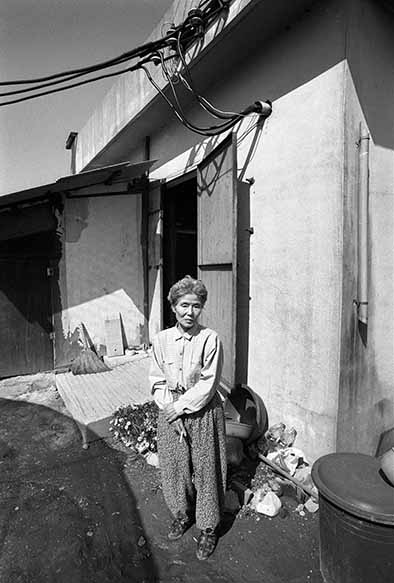
Kang Dokkyong
lived in the abandoned concrete cistern. She was told to go to Japan as the
volunteer corps from her school teacher. The life in the munitions factory
"Fujikoshi" in Toyama was very hard. When she ran away, she was
arrested by a soldier and taken to the "comfort station" in
Matsushiro, Nagano prefecture. (photography: September 27, 1992 / South Korea)
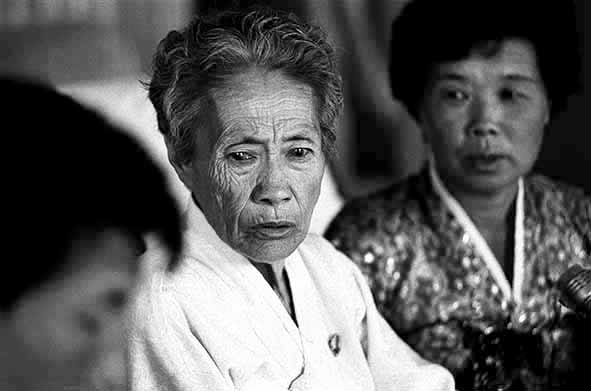
Li Boknyo lives in
Hamgyong-pukto. She begins to talk with the stern expression. "I was
carted off to the "comfort station" of the Imperial Japanese Army in
the northeast China. One day two women who resisted against soldiers were
suspended from a tree, and their breasts were scooped out. The soldiers chopped
their heads off and put them into the simmering water. And they forced us to
have that broth." (photography: August 12, 1992 / North Korea)
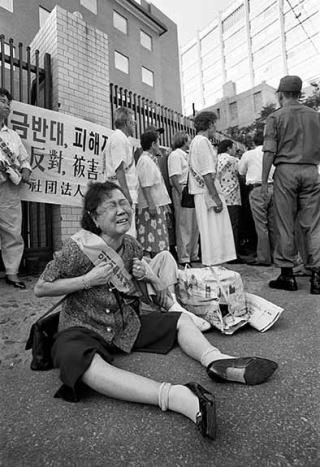
Kang Sunac beats
her chest in front of the Embassy of Japan in Seoul, strongly protests against
the Japanese government. When she was living in Masan, she was carted off by
three Japanese soldiers wearing red armbands. Her father tried to stop them,
but he was tossed into a jail. 35 young women including 13 caught with Kang in
Masan were sent to the "comfort station" in Palau. (photography:
August 31, 1994 / South Korea)
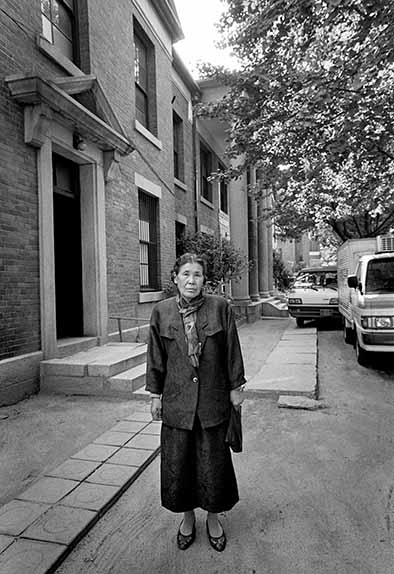
Kim Haksun broke
her silence on August 14, 1991, and exposed the damage done by the Imperial
Japanese Army. After that, not only from South Korea but also from North Korea,
China, Taiwan, the Philippines and Indonesia, those victimized women started to
come forward. Her courageous action revealed the Japanese serious crimes that
was going to be lost in history. (photography: October 21, 1991 / South Korea)
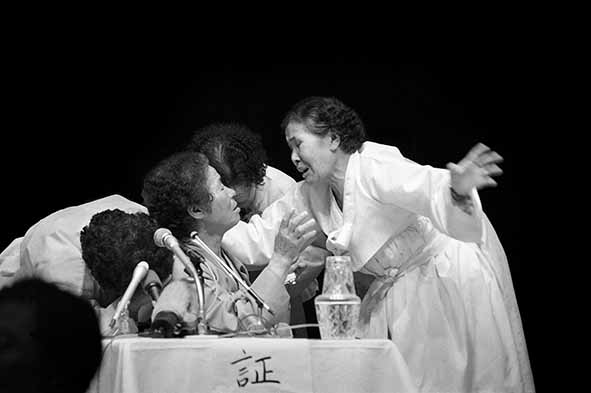
The meeting for
demanding apology and compensation from the Japanese government were held in
Tokyo. Kim Yongsil (the left) from North Korea told about her experience. As
soon as she finished her speech, Kim Haksun (the right) and other women from South
Korea rushed up to the stage and they shed tears together. It was the really
impressive encounter of the victimized women of the North and the South, who
were forced into the wartime brothels as a form of sexual slavery by the
Imperial Japanese Army. (photography: December 9, 1992 / Japan)
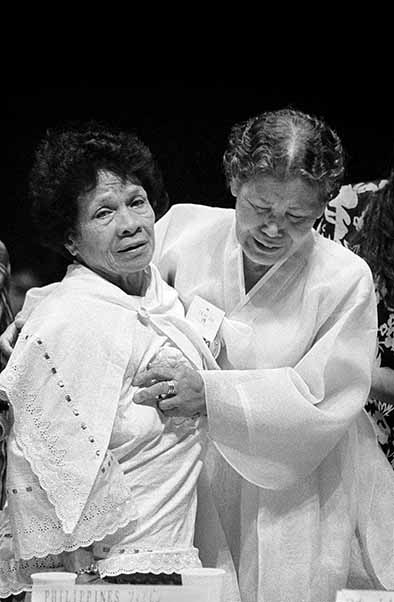
Kim Haksun (the
right) from Korea and Gertrudes Balisalisa from the Philippines embrace each
other as if to share the pain of being forced to be a sex slave (comfort woman)
by the Imperial Japanese Army. Victimized women in Asian countries gathered for
the international conference of postwar compensation held in Tokyo.
(photography: August 14, 1994 / Japan)
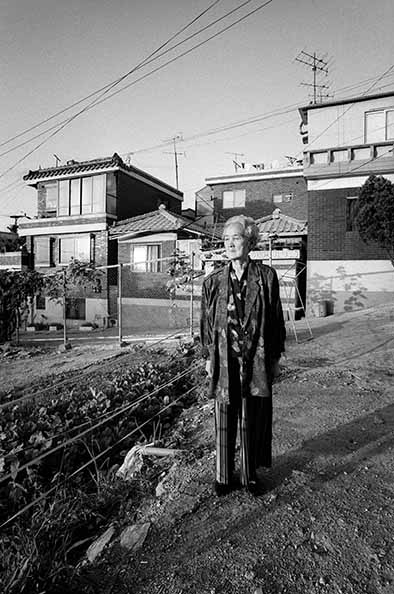
Kim Kyongsun
always speaks calmly. By the severe experience in the "comfort
station" in Osaka, she has been suffering from anthropophobia. For ten
years after she came back to Korea, she could not even come out of her room.
However, after she came forward in April, 1992 to tell the experience, it
became slightly better. (photography: September 26, 1992 / South Korea)
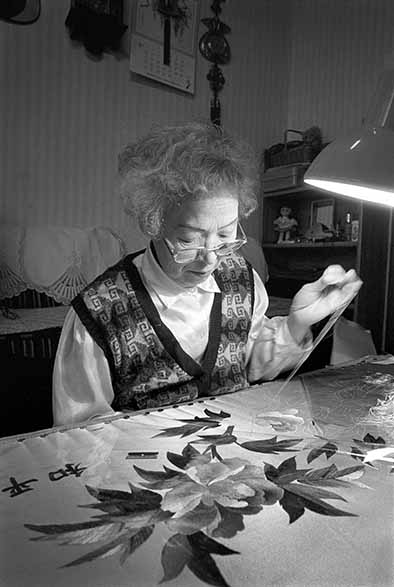
Sim Mija is good
at stitchwork. She was asked to make a stitchwork from the school teacher, and
made a Japanese map embroidered with morning glories. However, the teacher
said, "Because she did not do it with cherry blossoms, the flower of
Japan, her thought is doubtful," and took her to the police station. And
the next thing she knew was that she found herself in the army group in
Fukuoka. After returning home, she had to do stitchwork which reminds her of
hateful memory, for a living. (photography: May 7, 1992 / South Korea)
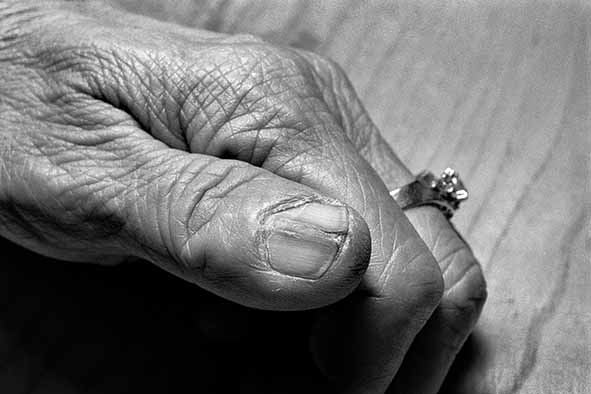
Sim Mija received
torture at the police station where she was taken. On her left thumb, the trace
of the bamboo needle inserted under her nail still remains clearly. And on her
shoulders and neck, there are burn scars made by a burnt iron pushed at her. At
that time, she lost her senses by the smell of her burnt body. (photography:
May 7, 1992 / South Korea)
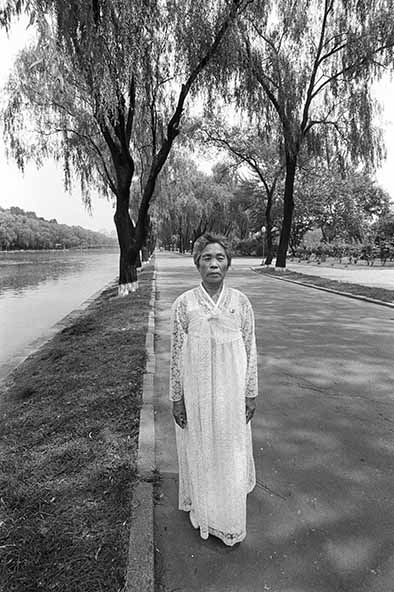
"The women
who resisted hard against soldiers in the comfort station were murdered in
front of us as the examples," Li Gyongsong said, "and the bodies were
taken to pieces and thrown away into the river." She sometimes woke up
with a jerk in the midnight at the painful memory of those days. To get the
mental comfort, she came forward first in North Korea and exposed the damage
done by the Imperial Japanese Army. (photography: August 13, 1992 / North
Korea)
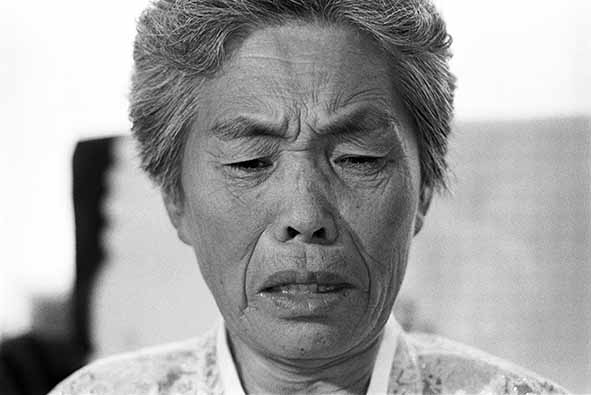
Li Gyongsong
stands at the bank of Pot'ongang flowing through the Pyongyang City. 219
victimized women followed her and came forward in North Korea, and 46 of them
revealed their names and faces. And among them, only less than ten women were
still alive in an investigation of 2009. (photography: August 13, 1992 / North
Korea)
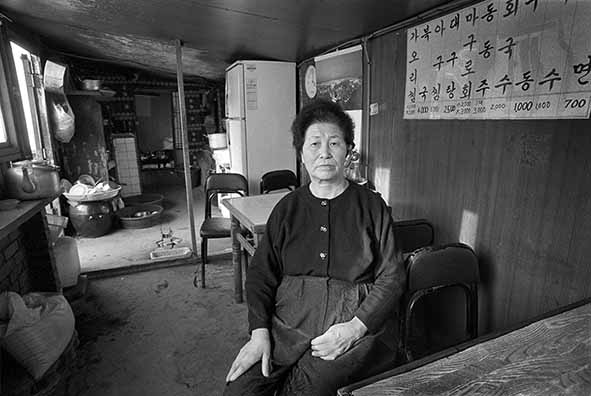
I Kwibun runs her
own restaurant. "Your father is waiting for you to come." So she was
deceived and taken to Takao Port of Taiwan by a ship. She says, "In the
kamikaze pilots of the Imperial Japanese Army, there were some Koreans. And when
they came to the comfort station, we just talked about our hometown. We once or
twice met each other secretly and we sang songs and cried together in the
middle of the night." (photography: February 22, 1992 / South Korea)

Jeanne O'hearn
talks about her victimized experience while being watched warmly by her
daughter. In 1942, the Imperial Japanese Army occupied Indonesia which was
under Dutch colonial rule. And two years later, the army took 35 women
including O'hearn to the "comfort station" from the Dutch "detention
camp". In the postwar "Batavia drumhead court-martial", one
Japanese officer received the death penalty, and 11 others were found guilty.
(photography: December 9, 1992 / Japan)
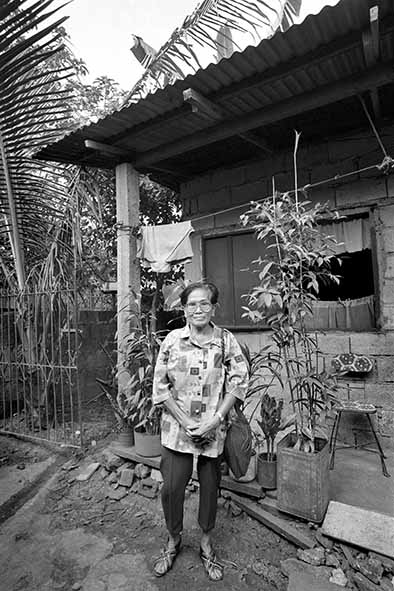
In the suburbs of
Quezon City, Philippines, Anastacia Cortes stands in front of her house. She
and her husband were taken to "Fort Santiago" by the Japanese
soldiers. After cruel torture, her husband was murdered in the oubliette which
was made to be buried in water at the time of a high tide. And she, herself was
made to be a comfort woman for five months. (photography: February 18, 1993 /
Philippines)
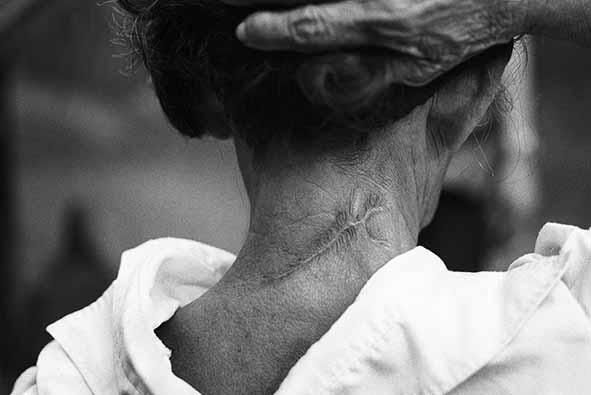
Rosario Nopueto
has the sword wound on her neck. In the Japanese army post, there were
approximately 40 Filipinos such as the women for the sex slaves, and the men
for trivial routine duties. Before the withdrawal of the Imperial Japanese Army
from the Philippines by the hard attack of the United States, the Japanese
soldiers blindfolded those Filipinos, lined them up to the ground, and chopped
their head off one by one. However, Nopueto survived luckily. (photography:
February 21, 1993 / Philippines)
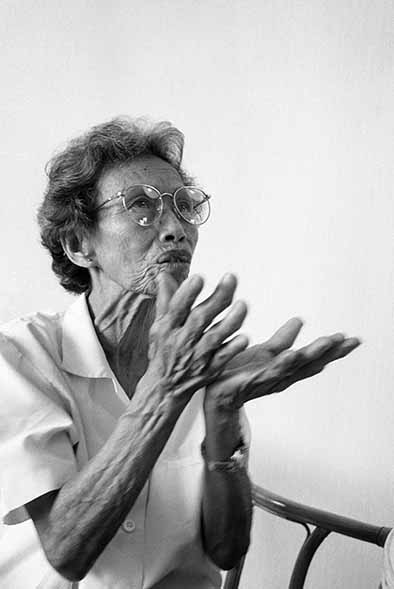
Tomasa Salinog
still lives in the house where she was born in Iloilo City, Philippines.
"Two Japanese soldiers came into my house at midnight and tried to take
me. My father stepped in to help me, but one of the soldiers cut him with a
sword. When I rushed to him, his neck had already been chopped off from his
body. I cried to the top of my lungs but they dragged me down the street to the
army post." (photography: November 23, 1992 / Philippines)
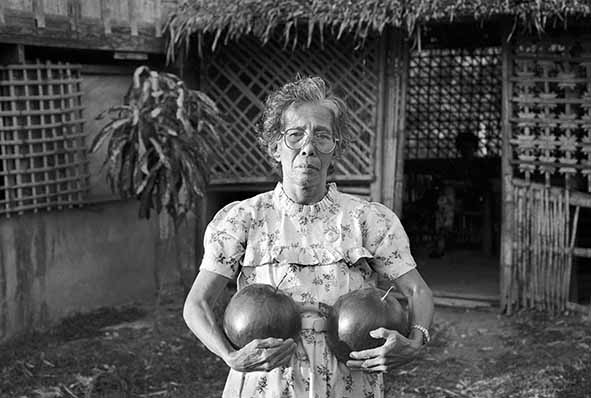
Lourdes
Divinagracia was forced to have intercourse with 15 Japanese soldiers in the
army post. She was brought to the place by the soldier who came over to the
Philippines from Okinawa with his family for business and joined the Imperial
Japanese Army there in the occupied Philippines. After Japan's defeat in the
war, his three infants were left behind in the Philippines. So she took care of
them. (photography: February 24, 1993 / Philippines)
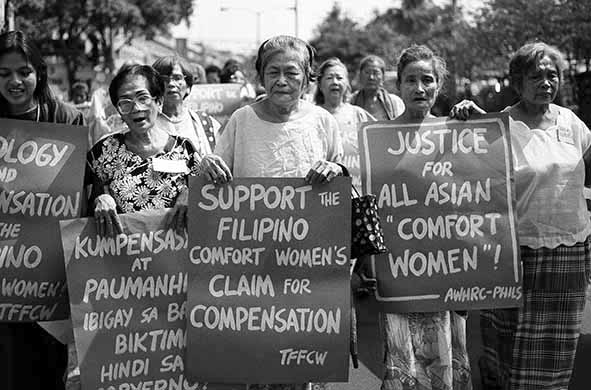
Filipino women,
who were forced into the wartime brothels by the Imperial Japanese Army, march
for the Japanese Embassy of Manila. In September, 1992, Maria Rosa Henson (the
center) came forward first in the Philippines as the victimized woman. By doing
so, she wanted to prevent that tragedy from being repeated. (photography:
February 10, 1993 / Philippines)
TOP PAGE

















